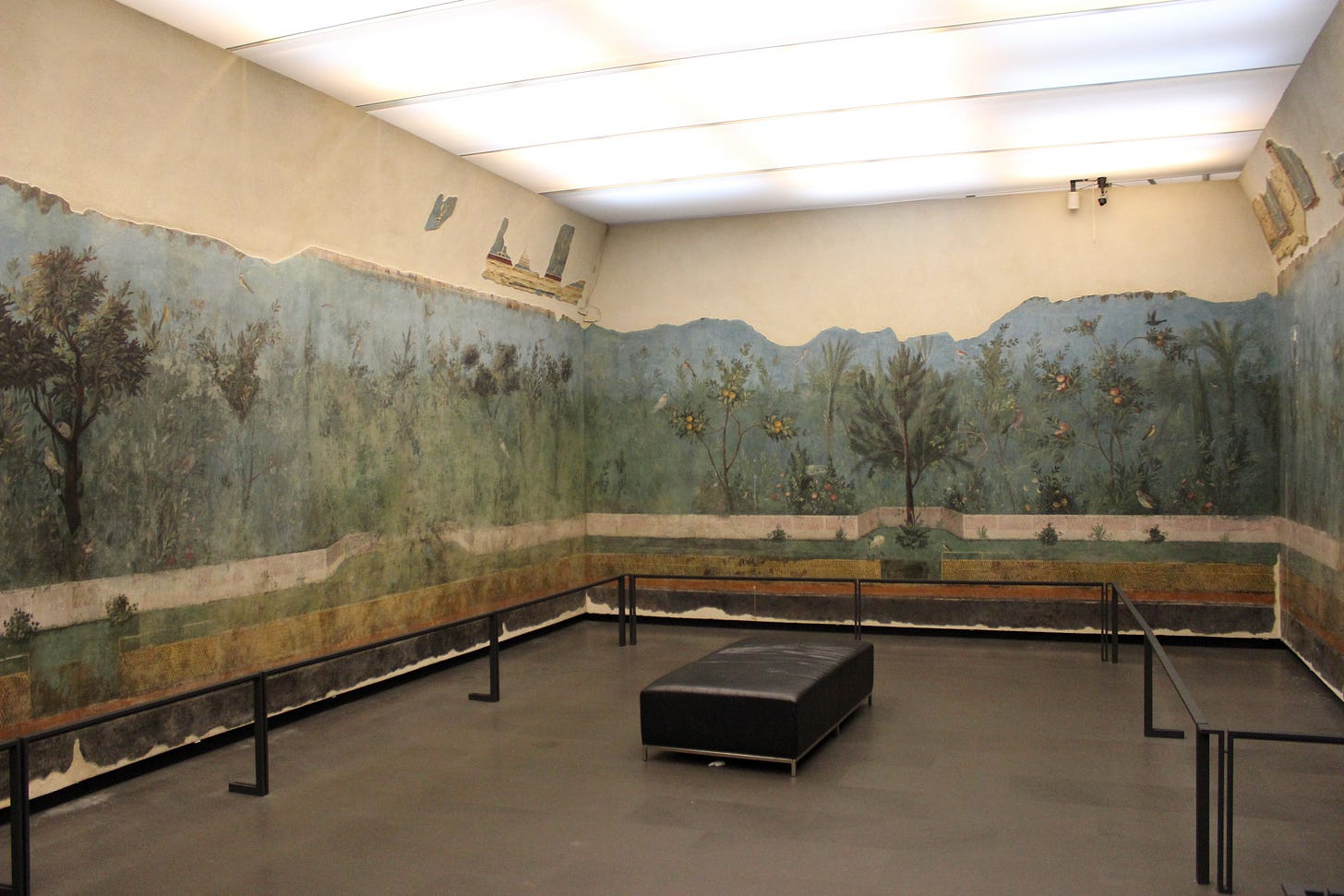
The fresco of The Garden of the Villa of Livia is an exquisite example of Roman art from the Augustan period, created during the 1st century BCE. The villa, located in Primaporta, Italy, is associated with the wife of Emperor Augustus, Livia Drusilla. This fresco offers a glimpse into Roman ideals of nature, luxury, and imperial propaganda.
The fresco was discovered in the Villa of Livia, which is thought to have been a retreat for Livia, Augustus' wife. This residential villa dates back to the reign of Augustus, and the fresco itself likely served as a symbol of imperial power and connection to divine nature. Art during this period, especially under Augustus, was often designed to glorify the imperial family and cement the ruler's legacy. The use of naturalistic imagery in The Garden is emblematic of the Augustan emphasis on moral rejuvenation and the idealization of Roman society.
The fresco is painted in the second style of Roman wall painting, which sought to create a sense of depth and perspective on flat surfaces. The artist employed techniques to create the illusion of an open-air garden, with lush vegetation, birds, and other elements of nature. The spatial arrangement of the fresco emphasizes both natural beauty and human control over nature, a recurring theme in Augustan art. The scene is rendered with great attention to detail, and the illusionistic quality of the space reflects Roman advances in perspective and their ability to depict the natural world.
The garden depicted in the fresco is not merely a representation of nature, but a carefully curated symbol of abundance, fertility, and peace. Scholars believe that the imagery of flourishing plants and animals, paired with the private, secluded nature of the garden, symbolizes the harmony between the emperor’s family and the natural world. It also suggests the idealized peace of the Pax Romana, an era of relative peace and prosperity throughout the Roman Empire, achieved largely through Augustus’ political and military successes.
The Garden of Livia is a prime example of how art during the Augustan era was not just a form of aesthetic expression but also a tool of political and social propaganda. The emphasis on nature and fertility aligns with Augustus’ efforts to restore traditional Roman values, particularly the importance of family and the continuation of the imperial line. By associating Livia’s private residence with images of idealized nature, Augustus reinforced the notion that his rule was divinely sanctioned and beneficial to Rome’s prosperity.
The Garden of the Villa of Livia is a masterpiece that embodies the artistic achievements and political ideologies of early imperial Rome. Through its intricate depiction of nature and the technical skill employed in its execution, the fresco offers valuable insight into the values and propaganda of the Augustan era. The fresco serves as a testament to the role of art in both reflecting and shaping the cultural, political, and social landscape of ancient Rome.
References:
Galinsky, Karl. Augustan Culture: An Interpretive Introduction. Princeton University Press, 1996.
Kleiner, Diana E. E. Roman Sculpture. Yale University Press, 1992.
Ling, Roger. Roman Painting. Cambridge University Press, 1991.
Zanker, Paul. The Power of Images in the Age of Augustus. University of Michigan Press, 1990.
Villa of Livia. Encyclopaedia Britannica, 2021, https://www.britannica.com/topic/Villa-of-Livia.




How is this possible? Seriously. Rogue, Rogue, Rogue. We are sisters in spirit when it comes to Friday posts lately.
I pray for your family in these times of incredible unpredictability ✨🙏🏻